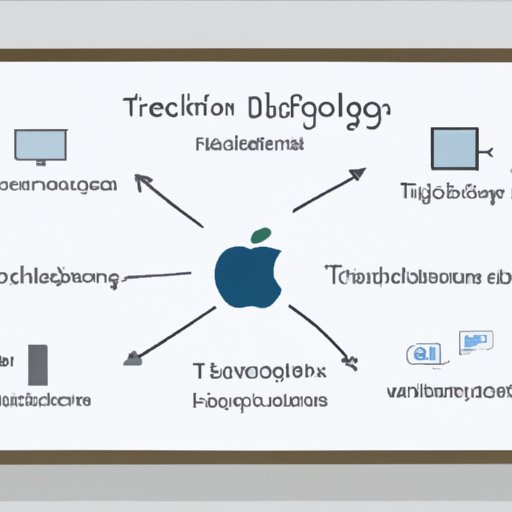Introduction
Instructional technology is a type of educational technology that is used to facilitate teaching and learning in the classroom. It includes a wide range of tools and resources such as computers, software, digital textbooks, interactive whiteboards, and more. Instructional technology has the potential to revolutionize the way teachers teach and students learn. It can be used to engage students, improve their understanding of concepts, and help them develop critical thinking skills.
The use of instructional technology in the classroom has been shown to have numerous benefits. According to a study by the National Education Association, “students who used technology during instruction had higher achievement scores than those who did not use technology.” Additionally, technology can help to create an environment of active learning, where students are encouraged to participate in the learning process. Furthermore, instructional technology can be used to differentiate instruction, providing individualized instruction that meets the needs of all learners.

Types of Instructional Technology Used in the Classroom
There are many different types of instructional technology that can be used in the classroom. Some of the most popular types include:
- Computers: Computers are one of the most commonly used types of instructional technology. They can be used to access digital textbooks, research materials, educational websites, and more. They can also be used to create presentations, documents, and other multimedia projects.
- Software: Software programs can be used to supplement instruction, provide practice activities, and assess student progress. Popular educational software programs include math programs, language arts programs, and virtual reality simulations.
- Interactive Whiteboards: Interactive whiteboards are large touch-screen displays that allow teachers to present content, write or draw on the board, and control the computer from the board.
- Tablets: Tablets are handheld devices that can be used to access digital textbooks, take notes, create multimedia projects, and more.
- Virtual Reality: Virtual reality (VR) is an immersive experience that allows students to explore 3D environments and interact with objects. VR can be used to supplement instruction in topics like science, history, and geography.
Each type of instructional technology can be used in different ways in the classroom. For example, computers can be used to access online resources, create multimedia projects, and assess student progress. Software programs can be used to provide practice activities, reinforce learning, and assess student understanding. Interactive whiteboards can be used to present content, write or draw on the board, and control the computer from the board. Tablets can be used to access digital textbooks, take notes, and create multimedia projects. And virtual reality can be used to supplement instruction in topics like science, history, and geography.

Challenges of Integrating Instructional Technology into the Classroom
Integrating instructional technology into the classroom can be challenging. One of the biggest challenges is the cost of purchasing and implementing the technology. Computers, software, and other instructional technology tools can be expensive, and schools may not have the funding to purchase them. Additionally, there is the cost of training teachers and students to use the technology.
Another challenge is establishing policies and procedures around the use of instructional technology in the classroom. Schools need to ensure that the technology is being used appropriately and safely. This requires clear guidelines and expectations for both teachers and students.
Comparing Traditional Education with Instructional Technology-Based Education
It is important to consider the advantages and disadvantages of traditional education versus instructional technology-based education when considering integrating technology into the classroom. Traditional education typically involves lectures, textbook readings, and worksheets. It is often focused on memorization and recall of facts.
In contrast, instructional technology-based education takes advantage of the power of technology to engage students in learning. It can be used to supplement traditional instruction, provide individualized instruction, and foster collaboration among students. Technology can also help to create an environment of active learning, where students are encouraged to participate in the learning process.
Strategies for Implementing Instructional Technology in the Classroom
Successfully integrating instructional technology into the classroom requires careful planning and implementation. The following are some strategies for implementing instructional technology in the classroom:
- Planning: Develop a plan for the implementation of instructional technology in the classroom. Consider the types of technology to be used, the costs of purchasing and implementing the technology, and the timeline for implementation.
- Goals: Set goals for the use of instructional technology in the classroom. These goals should be specific, measurable, achievable, relevant, and timely.
- Training: Provide training for teachers and students on the use of instructional technology. This should include a review of the school’s policies and procedures for using technology in the classroom.
- Assessment: Assess the success of the implementation of instructional technology in the classroom. This can be done through surveys, focus groups, and other assessment methods.
Conclusion
Instructional technology has the potential to revolutionize the way teachers teach and students learn. It can be used to engage students, improve their understanding of concepts, and help them develop critical thinking skills. However, integrating instructional technology into the classroom can be challenging. It is important to consider the advantages and disadvantages of traditional education versus instructional technology-based education when making decisions about technology in the classroom. Additionally, it is important to have a plan for the implementation of instructional technology, set goals for its use, provide training, and assess the success of the implementation.
In conclusion, instructional technology can be an invaluable tool in the classroom if implemented effectively. Proper planning and implementation are essential for taking full advantage of the benefits that instructional technology can provide.
(Note: Is this article not meeting your expectations? Do you have knowledge or insights to share? Unlock new opportunities and expand your reach by joining our authors team. Click Registration to join us and share your expertise with our readers.)
